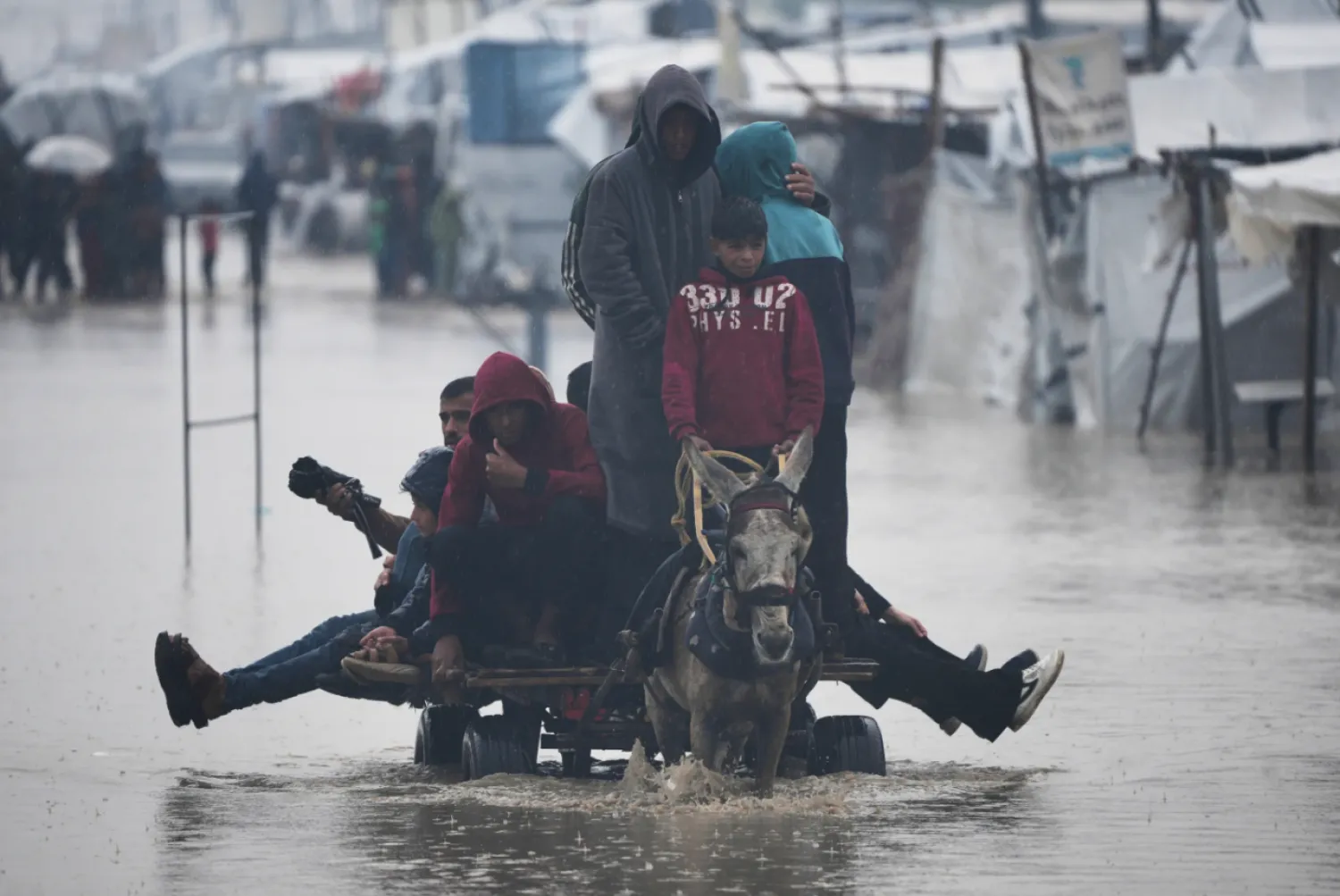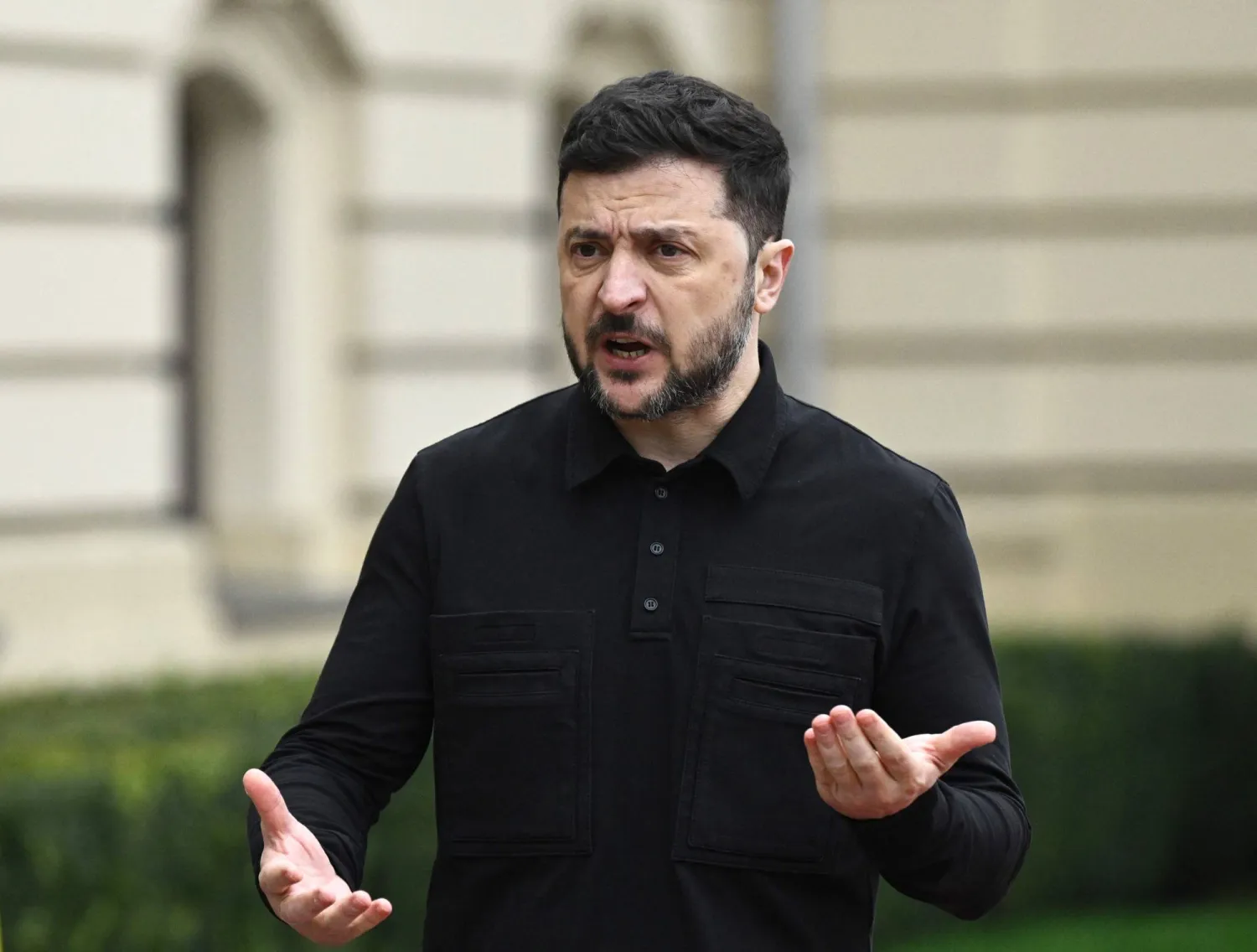The US military's pier to get humanitarian aid into Gaza has come to an end after a series of problems.
The pier was pulled from the Gaza shore on June 28 due to rough seas, and bad weather prevented troops from reinstalling it. Now, it's being dismantled and brought home.
Vice Adm. Brad Cooper, deputy commander at US Central Command, announced the end of the mission, saying the pier achieved its intended effect. And he said the Israeli port at Ashdod is a more sustainable option for aid delivery and will now be used instead.
Humanitarian groups stopped distributing supplies that arrived by sea on June 9 due to security concerns and never started again. Contractors hired by the World Food Program have removed aid that piled up onshore for distribution to starving Palestinians.
It's been a long and difficult road for the pier, which has been battered by weather and troubled by security problems. It also managed to bring tons of food and other supplies to starving Palestinians. Here's a timeline of the pier:
March: Announcement and prep MARCH 7: President Joe Biden announces his plan for the US military to build a pier during his State of the Union address.
“Tonight, I’m directing the US military to lead an emergency mission to establish a temporary pier in the Mediterranean on the coast of Gaza that can receive large shipments carrying food, water, medicine and temporary shelters,” he said.
But even in those first few moments, he noted the pier would increase the amount of humanitarian aid getting into Gaza but that Israel “must do its part” and let more aid in.
MARCH 8: Maj. Gen. Pat Ryder, Pentagon spokesman, tells reporters it will take “up to 60 days” to deploy the forces and build the project.
MARCH 12: Four US Army boats loaded with tons of equipment and steel pier segments leave Joint Base Langley-Eustis in Virginia and head to the Atlantic Ocean for what is expected to be a monthlong voyage to Gaza.
The brigade’s commander, Army Col. Sam Miller, warns that the transit and construction will be heavily dependent on the weather and any high seas they encounter.
LATE MARCH: US Army vessels hit high seas and rough weather as they cross the Atlantic, slowing their pace.
April: Construction and hope APRIL 1: Seven World Central Kitchen aid workers are killed in an Israeli airstrike as they travel in clearly marked vehicles on a delivery mission authorized by Israel.
The strike fuels ongoing worries about security for relief workers and prompts aid agencies to pause delivery of humanitarian assistance in Gaza.
APRIL 19: US officials confirm that the UN World Food Program has agreed to help deliver aid brought to Gaza via the maritime route once construction is done.
APRIL 25: Major construction of the port facility on the shore near Gaza City begins to take shape. The onshore site is where aid from the causeway will be delivered and given to aid agencies.
APRIL 30: Satellite photos show the US Navy ship USNS Roy P. Benavidez and Army vessels working on assembling the pier and causeway about 11 kilometers (6.8 miles) from the port on shore.
May: The pier opens ... then closes MAY 9: The US vessel Sagamore is the first ship loaded with aid to leave Cyprus and head toward Gaza and ultimately the pier. An elaborate security and inspection station has been built in Cyprus to screen the aid coming from a number of countries.
MAY 16: Well past the 60-day target time, the construction and assembly of the pier off the Gaza coast and the causeway attached to the shoreline are finished after more than a week of weather and other delays.
MAY 17: The first trucks carrying aid for the Gaza Strip roll down the newly built pier and into the secure area on shore, where they will be unloaded and the cargo distributed to aid agencies for delivery by truck into Gaza.
May 18: Crowds of desperate Palestinians overrun a convoy of aid trucks coming from the pier, stripping the cargo from 11 of the 16 vehicles before they reach a UN warehouse for distribution.
May 19-20: The first food from the pier — a limited number of high-nutrition biscuits — reaches people in need in central Gaza, according to the World Food Program.
Aid organizations suspend deliveries from the pier for two days while the US works with Israel to open alternate land routes from the pier and improve security.
MAY 24: So far, a bit more than 1,000 metric tons of aid has been delivered to Gaza via the US-built pier, and USAID later says all of it has been distributed within Gaza.
MAY 25: High winds and heavy seas damage the pier and cause four US Army vessels operating there to become beached, injuring three service members, including one who is in critical condition.
Two vessels went aground in Gaza near the base of the pier and two went aground near Ashkelon in Israel.
MAY 28: Large portions of the causeway were pulled from the beach and moved to an Israeli port for repairs. The base of the causeway remains at the Gaza shore.
June: Big crises for the pier JUNE 7: The damaged causeway was rebuilt and reconnected to the beach in Gaza.
JUNE 8: The US military announced that deliveries resumed off the repaired and reinstalled dock.
The same day, Israel rescued four hostages taken by Hamas during the Oct. 7 attacks in an operation that killed 270 Palestinians.
JUNE 9: World Food Program chief Cindy McCain announced a “pause” in cooperation with the US pier during a TV interview, citing the previous day’s “incident” and the rocketing of two WFP warehouses that injured a staffer.
JUNE 10: WFP said the UN would conduct a security review to assess the safety of its staff in handling aid deliveries from the pier. In the meantime, the US military said it would stockpile aid shipments on a secure beach in Gaza.
Ryder, the Pentagon spokesman, said no aspect of the pier or its equipment had been used in Israel's rescue operation. The Pentagon says an area south of the pier was used for the return of the freed hostages back to Israel.
JUNE 14: The pier was detached from the beach in Gaza to prevent damage during rough seas and allow the military to reattach it more quickly later, US officials said.
JUNE 19: The pier was re-anchored in Gaza and more than 656 metric tons, or 1.4 million pounds, of aid was delivered in the hours after it resumed operations, Ryder said.
Aid agencies, however, did not restart their distribution of the aid, so workers have been storing it in the secure area.
JUNE 28: The pier is removed due to weather, and the US is considering not putting it back unless aid begins heading again to Palestinians in need, several US officials said.
July: End of the line JULY 16: Israeli Defense Minister Yoav Gallant says Israel will soon replace the US military pier with a dedicated facility for aid delivery called Pier 28 at the port of Ashdod. He did not say when it would begin operating.
JULY 17: The Defense Department formally announces the pier will be dismantled and brought home. Altogether, the military moved nearly 20 million pounds of aid onto the Gaza shore in what officials said was the “largest volume of humanitarian assistance” ever delivered into the Middle East.









